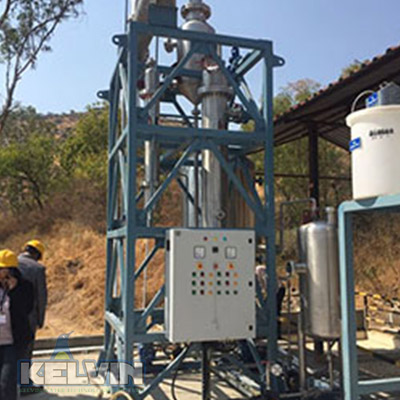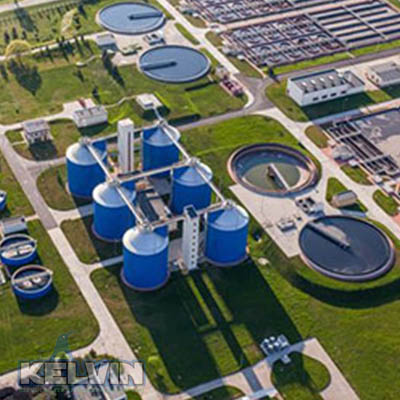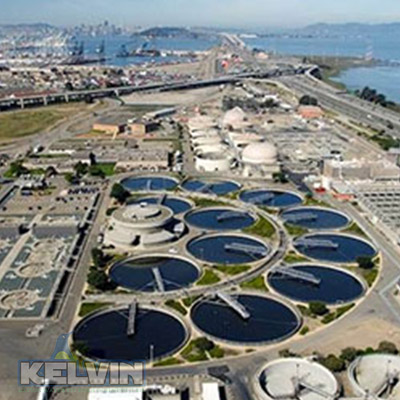
-
Water, Waste Water and Organic Waste
Management Company -

email us
info@kelvinindia.in
-

call us now
+91 9812 24 1001



Zero Discharge Sewage Treatment Plant(ZLD) as the name itself suggests, is a wastewater treatment process that minimizes the liquid waste discharge almost to ZERO at the end of an industrial process. Government has come up with tighter restrictions on discharge of industrial wastewater, therefore organizations are using advanced treatment methods as ZLDs so as to limit the legal and regulatory consequences that would accumulate should you violate any local effluent regulations. ZLD systems are introduced in the areas with limited water resources, or in the areas with environmental sustainability as the priority also in useful in places where the waterways are protected.
Wastewater treatment by RO (Reverse Osmosis) membrane generates reject water, which is highly concentrated effluent with TDS. In most cases such reject water has to be treated further because legal norms may not be allow it to be discharged in that stage. Therefore, the next step is to install evaporators after RO. Evaporators evaporate the rejected water from RO & concentrate salts present there to dryness. Also, since evaporators are expensive system, it is a prerequisite in a ZLD system to install a high efficiency RO so that the RO-reject volume is minimized. Further, it is needed that the most optimized size of evaporator is installed. This can be achieved by enhancing the recovery across RO System in ZLD system by Kelvin Water Technologies.
If we talk about the cleaning process of ZLD, it helps to reduce the dissolved solids from the dirty water and then return back the water to the main source. Reverse Osmosis or Membrane Filtration may also be used to purify the waste water and discharging the clean water to the source. It will take a smaller amount of water to get a rejection and will require evaporation. Likewise, RO purifies the water, falling film evaporates the water up to the point of crystallization. Apart from this, resultant Brine, crystal-laden brine are also used in this process to crystallize the water and to filter the same which is returned from the crystallizer. The whole process takes time, yet it purifies the water to great extent. If any organic materials are present, condensate polishing may be performed to final cleanup.
ZLD plants being offered by Kelvin Water Technologies Pvt Ltd offers the quality standards which are the key elements. The key modules in a ZLD system include Pre-treatment, Membrane Filtration, Evaporation, Crystallization, Solids Recovery etc. It is aimed to treat the water till zero discharge left under the final stage.












Ans. Zero liquid discharge (ZLD) is a strategic wastewater management approach that assures that no industrial effluent is discharged into the environment. It is accomplished by recycling wastewater and then recovering and reusing it for industrial purposes.
Ans. The goal of zero discharge effluent is to eliminate discharges to the aquatic environment, recycle and reuse all possible solid and liquid process wastes, and limit air emissions to the least amount and toxicity practicable.
Ans. ZLD is an industrial strategy in which the maximum amount of wastewater effluent is collected for reuse while dissolved salts and other constituents are disposed of as solid trash. As a result, there will be no water discharge to the environment, resulting in greater sustainability in terms of water usage. Preliminary filtration, ultra filtration, reverse osmosis, evaporation, crystallisation, and product water polishing are all unit processes in a typical ZLD system.
Ans. Main advantages of ZLD: -
Ans. Zero Liquid Discharge (ZLD) is an innovative water treatment technology that aims to reuse as much water as possible in the manufacturing process without the requirement for waste release. ZLD is the ultimate wastewater treatment technology that has no or practically no environmental impact. Salt (which can be reused or sold) and purified water (which can be reused in the technology) are recovered from wastewater by combining different procedures. This allows the core technology's ZLD is the ultimate wastewater treatment technology that has no or practically no environmental impact. Salt (which can be reused or sold) and purified water (which can be reused in the technology) are recovered from wastewater by combining different procedures. This allows the core technology's operational costs to be reduced. These advantages make ZLD one of the most popular technologies for reducing the environmental impact of industry, particularly in countries with stringent environmental rules on industrial waste.
Ans. It also has some disadvantages:














